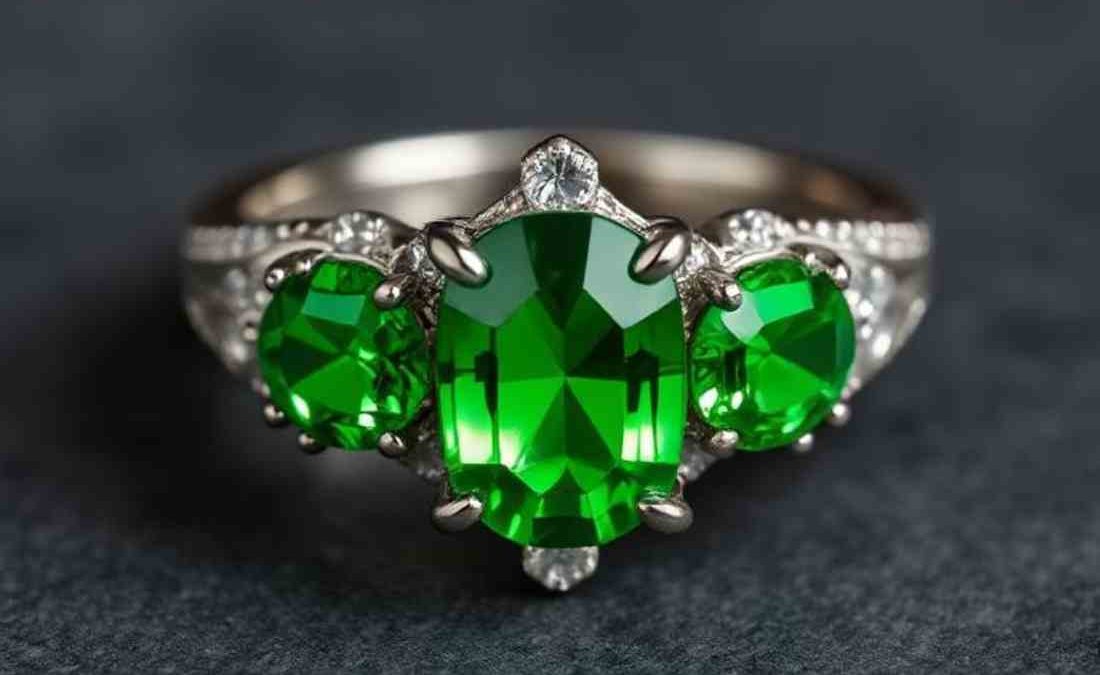Green gemstones have captivated humanity for centuries with their lush, vibrant hues. Symbolizing nature, growth, and renewal, these gems are prized in jewelry and spiritual practices. Green gemstones come in various shades and properties, from the deep emerald to the mystical jade. Below, we explore their origins, how they work, where they are found, and their use in design.
Table of Contents
Where Does It Come From?
Green gemstones form under different geological conditions, often influenced by trace elements like chromium, vanadium, or iron. Some of the most famous green gems include:
- Emerald: A variety of beryl colored by chromium and vanadium.
- Jade: Comprising nephrite and jadeite, known for its toughness and cultural significance in Asia.
- Peridot: Formed in the Earth’s mantle and brought to the surface by volcanic activity.
- Green Sapphire: Colored by iron and titanium impurities.
- Malachite: A copper carbonate mineral with striking banded patterns.
Depending on their mineral composition, these gems are typically found in metamorphic, igneous, or sedimentary rocks.
How It Works (Metaphysical & Healing Properties)
Many believe green gemstones possess healing and spiritual properties:
- Emerald: Associated with love, wisdom, and mental clarity. It is said to enhance intuition & emotional balance.
- Jade: Revered in Chinese culture for prosperity, longevity, and protection.
- Peridot: The “stone of transformation,” believed to alleviate stress and attract abundance.
- Malachite: Considered a potent protector against negative energy and a stone of change.
While scientific evidence for these claims is lacking, many people use these stones in meditation, Reiki, and energy healing practices.
Where It Is Found
Green gemstones are mined across the globe:
- Colombia: The world’s finest emeralds come from mines like Muzo and Chivor.
- Brazil: A significant source of emeralds, tourmalines, and green amethyst.
- Myanmar (Burma): Known for high-quality jadeite.
- Zambia & Zimbabwe: Significant emerald producers.
- Russia (Siberia): Rich in demantoid garnet and chrome diopside.
- USA (Arizona): A key source of peridot.
Each region produces gems with distinct characteristics due to varying mineral compositions.
Design & Jewelry Applications
Green gemstones are versatile in jewelry design:
- Emeralds: Often cut in step cuts (emerald cut) to enhance color and minimize inclusions. Popular in rings, necklaces, and royal jewelry.
- Jade: Carved into beads, pendants, and sculptures, especially in Asian art.
- Peridot: Frequently faceted for earrings and summer-themed jewelry due to its bright lime-green hue.
- Malachite: Used in cabochons, inlay work, and statement pieces for its unique patterns.
Designers often pair green gems with gold or platinum to enhance their richness, while silver settings complement lighter stones like peridot.
Conclusion
With their mesmerizing colors and rich histories, green gemstones remain highly sought after in both fashion and spirituality. Whether you desire an emerald’s elegance, jade’s cultural depth, or malachite’s bold patterns, these gems offer endless beauty and meaning. Their global origins, metaphysical associations, and diverse designs make them timeless treasures in the world of gemology.


